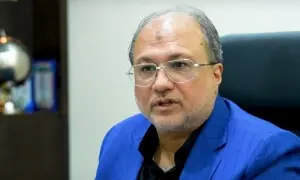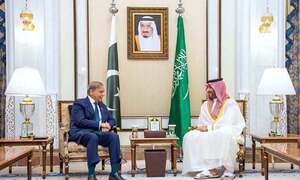In a recent report to the federal government and law enforcement agencies the Balochistan government, as quoted by a section of the press, warned of the so-called Islamic State's "growing footprint in Pakistan" and its recruitment of 10,000 to 12,000 people from Khyber Pakhtunkhwa's Hangu district and Fata's Kurram Agency. A few days ago, a UN report had also expressed concern that foreign militants from 80 countries were going to Iraq and Syria "on an unprecedented scale" to fight alongside IS. In the case of Pakistan the news is even grimmer. The recruits are not meant to go to the war zone but, according to the Balochistan government report, to attack military installations and government buildings in this country. The IS headed by its self-styled caliph Abu Bakr has its eye on Pakistan, too. Several TTP commanders, already pursuing a similar goal in territories that once formed part of historical Muslim lands of Khorasan, have now announced allegiance to Abu Bakr.
These militants have no chance of success here, though, for reasons entirely different from the ones cited by some. It has been argued, for instance, that decades of brutal authoritarian rule in Iraq and Syria erupted into mass uprisings and activated the region's sectarian fault lines also, allowing religious extremists to exploit the conditions in their favour. In the case of Pakistan, goes on the argument, there is an elected government, a vibrant media, and an independent judiciary for the people to vent their grievances and seek redress. Ignored is the important detail that IS is not an organic phenomenon, but a consequence of outside interventions: the US occupation of Iraq; the Gulf countries' financing, training and arming of radical Sunni Islamists to fight the Assad regime. To some extent, Pakistan shares the radicalisation element both as a consequence of the Afghan war's fallout and foreign funding of violent sectarian organisations, which could now become IS assets. In fact, the Balochistan government report says: "it has been reliably learnt that Daish [IS] has offered some elements of Lashkar-e-Jhangvi (LeJ) and Ahle Sunnat Wal Jamaat (ASWJ) to join hands with it in Pakistan. Daish has also formed a ten-member strategic planning wing."
Sadly, successive governments in this country tolerated violent sectarian outfits either due to lack of will to eliminate them or to avoid annoying their Gulf friends sponsoring these groups. Even when banned for committing carnage, their leaders were allowed to reinvent identities and resume activities under new names. Punjabi Taliban, a product of sectarian seminaries in southern Punjab, formed a nexus with the TTP. They have been involved in some of the most deadly terror attacks like the 2009 and 2011 assaults, respectively, on the GHQ and the Mehran Naval Airbase as well as the attack on Sri Lankan cricket team and assassination of minorities minister Shahbaz Bhatti. These sectarian militants are a grave threat to the peace and security of this country. Unlike the situation in Iraq and Syria, nonetheless, Pakistan's military is a strong and cohesive force enjoying popular support. Once the decision was made to take on the militants, as part of the preparations for the Zarb-e-Azb operation the security forces together with intelligence agencies carried out nearly 4000 raids across the country to take out the TTP's sleeper cells that included sectarian groups. As a result, the leader of the Punjabi Taliban, Ismat Ullah Muavia, announced in September last that his group would not undertake any militant activity and only preach Islam from then on. Yet, as the present report indicates, the threat has not disappeared altogether. The government must keep an eye on the leaders and foot soldiers of sectarian outfits, and do all that is necessary to keep them from creating trouble.
BR100
16,307
Increased By
236.2 (1.47%)
BR30
51,537
Increased By
1163.4 (2.31%)
KSE100
157,953
Increased By
1775.7 (1.14%)
KSE30
48,199
Increased By
520.5 (1.09%)






















Comments
Comments are closed.